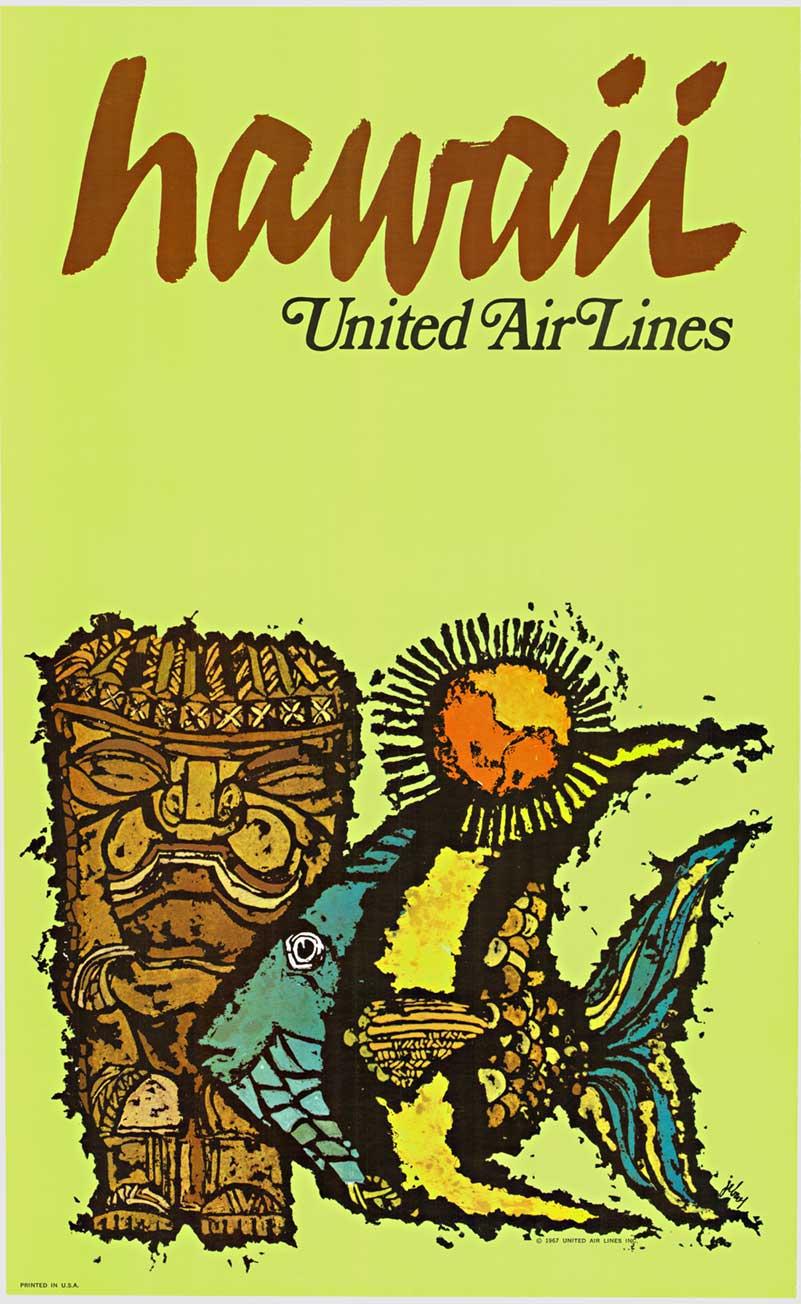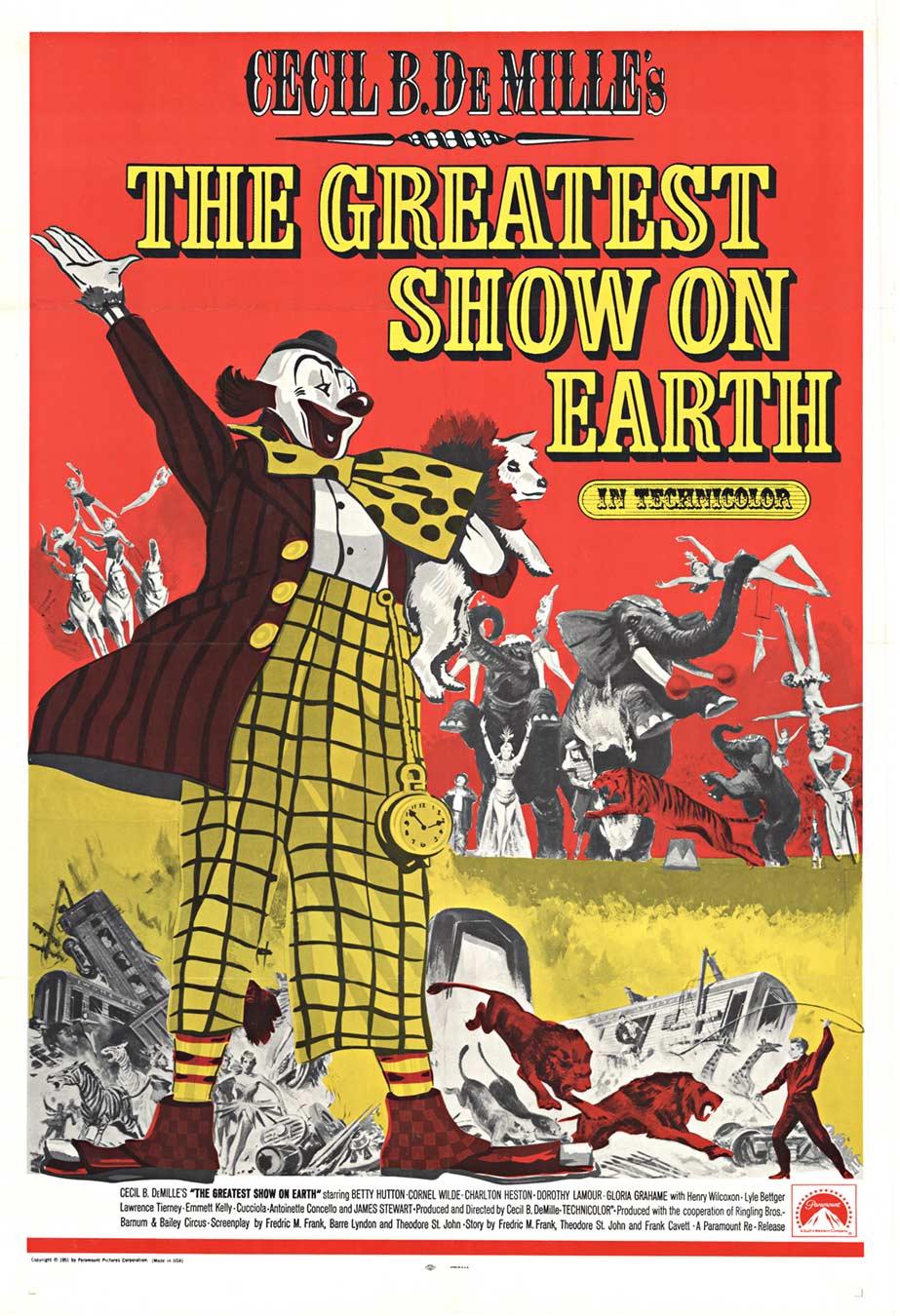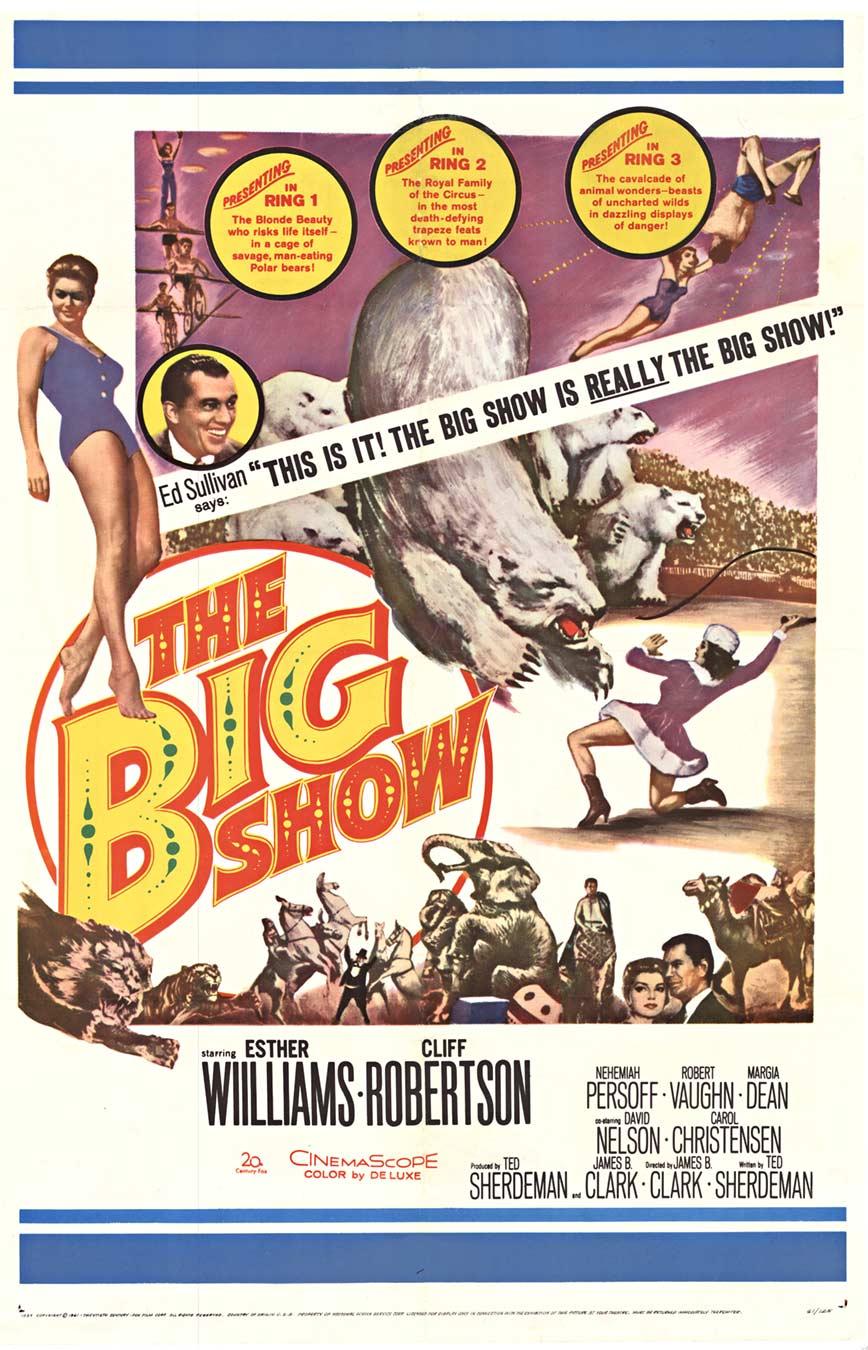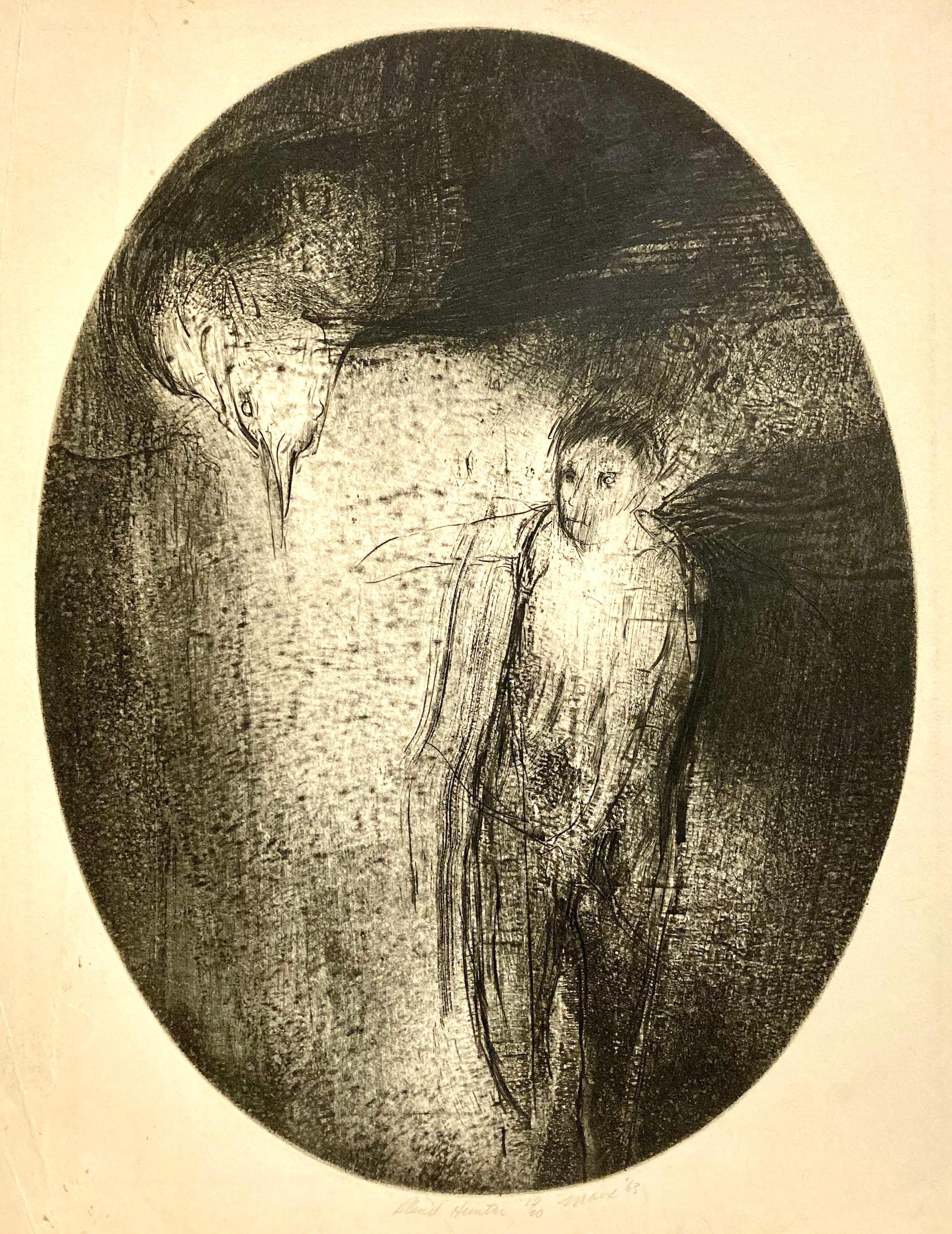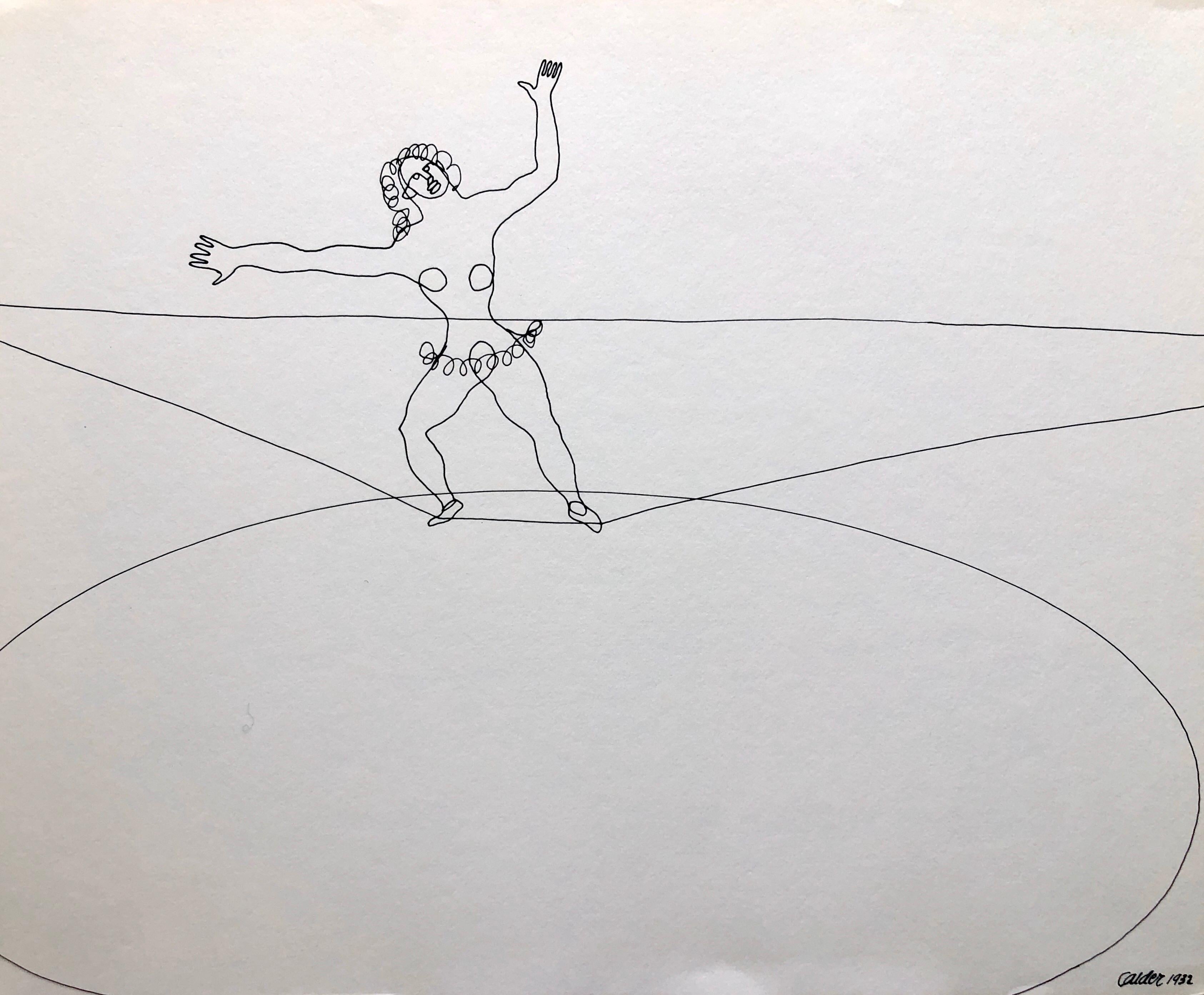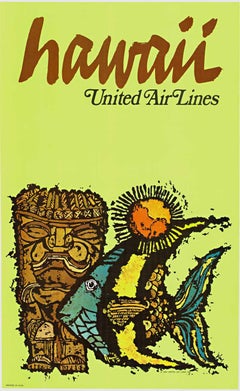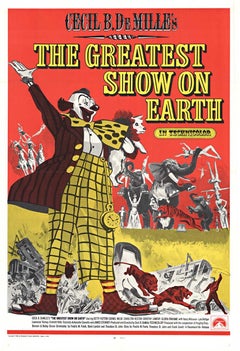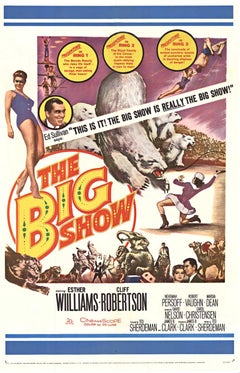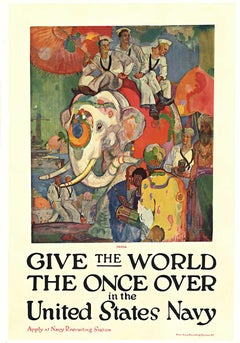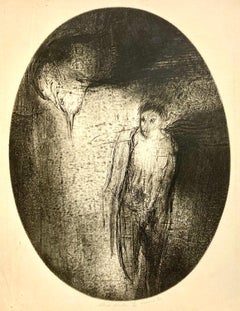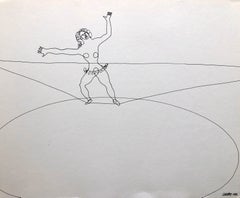Items Similar to "Arena" First 3 Dimension Western vintage movie poster 1953 US 1-sheet
Want more images or videos?
Request additional images or videos from the seller
1 of 7
Unknown"Arena" First 3 Dimension Western vintage movie poster 1953 US 1-sheet1953
1953
About the Item
“Arena” The First 3 Dimension Western. Original theater issued vintage movie poster - 1953. Professional archival linen backed with the original theater-issued fold marks restored. Ready to frame. Size: 27" x 41.5"
Original linen-backed 1953 first 3-D Western movie poster. The FIRST 3-D Dimension Western MGM full-length feature. You live dangerously in MGM's great outdoor romance! Print by Technicolor. Photographed in Technicolor Ansco Color. Gig Young, Jean Hagen, Polly Bergen, dir: Richard Fleischer; MGM. Promoted by MGM as the first 3-D Western, this poster, appropriately, has the expected "coming at you out of the screen" graphics.
Spec-wearing audiences were no doubt diving behind their seats every few minutes back in the 1950s. Feet, balls, stools, bottles, fists – you name it, they all fly at the screen at one time or another in Arena.
This is a genuine 27" x 41" U.S. one-sheet ORIGINAL MOVIE POSTER issued by the studio when the film was released and meant for theatrical display.
This is an Original Lithograph Vintage Poster; it is not a reproduction.
- Creation Year:1953
- Dimensions:Height: 41.5 in (105.41 cm)Width: 27 in (68.58 cm)Depth: 0.05 in (1.27 mm)
- Medium:
- Movement & Style:
- Period:
- Condition:restored original theater-issued fold marks. bright and vibrant, very good condition, linen backed.
- Gallery Location:Spokane, WA
- Reference Number:Seller: 44701stDibs: LU1404210817242
About the Seller
5.0
Platinum Seller
Premium sellers with a 4.7+ rating and 24-hour response times
Established in 1998
1stDibs seller since 2020
222 sales on 1stDibs
Typical response time: 1 hour
- ShippingRetrieving quote...Shipping from: Spokane, WA
- Return Policy
Authenticity Guarantee
In the unlikely event there’s an issue with an item’s authenticity, contact us within 1 year for a full refund. DetailsMoney-Back Guarantee
If your item is not as described, is damaged in transit, or does not arrive, contact us within 7 days for a full refund. Details24-Hour Cancellation
You have a 24-hour grace period in which to reconsider your purchase, with no questions asked.Vetted Professional Sellers
Our world-class sellers must adhere to strict standards for service and quality, maintaining the integrity of our listings.Price-Match Guarantee
If you find that a seller listed the same item for a lower price elsewhere, we’ll match it.Trusted Global Delivery
Our best-in-class carrier network provides specialized shipping options worldwide, including custom delivery.More From This Seller
View AllOriginal Hawaii, United Air Lines vintage travel poster Hawaiiana
Located in Spokane, WA
Original United Air Lines Hawaii vintage travel poster. Archival linen backed in excellent condition, ready to frame. The images shown are of the ...
Category
1960s American Modern Figurative Prints
Materials
Offset
Original "The Greatest Show on Earth" 1951 vintage movie poster US 1-sheet
Located in Spokane, WA
Original “The Greatest Show on Earth” vintage US 1 sheet movie poster.
Cecil B DeMille’s 1951 movie. Archival linen backed in very good condition, ready to frame. Original theater-issued fold marks restored during linen backing. Over 70 years old, 1st printing.
Welcome to the circus. The Greatest Show on Earth starring Betty Hutton, Cornel Wilde, Charlton Heston, James Stewart (Jimmy Stewart...
Category
1950s American Modern Animal Prints
Materials
Offset
$1,500 Sale Price
20% Off
Original "The Big Show" vintage US 1-sheet movie poster 1961
Located in Spokane, WA
Original "The Big Show", US 1-sheet linen-backed movie poster from 1961. Very fine condition. Professional restoration of original theater fold marks. A - A- condition, ready to frame.
Original "the Big Show" US 1-sheet, 1961, linen-backed vintage movie poster. Very fine condition with the restoration of original theater-issued fold marks. A - A- condition.
NSS 61/125. Ester Williams...
Category
1960s American Modern Animal Prints
Materials
Offset
$479 Sale Price
20% Off
Original 1919, Give the World The Once Over in the United States Navy poster
Located in Spokane, WA
Original 1919 Give The World The Once Over in the United States Navy vintage poster. Archival linen backed. This poster presents itself very fine condition. The lower text por...
Category
1910s American Modern Animal Prints
Materials
Lithograph
Original Watch Out .. Safe Direction NRS vintage gun safety poster
Located in Spokane, WA
Original “Watch Out .. Point the Muzzle in a SAFE Direction” vintage National Rifle Association of America vintage poster. Printed in 1946 on a thick cardboard stock. Excellent ...
Category
1940s American Modern Figurative Prints
Materials
Lithograph
Original Loterie nationale L'arc de Triomphe vintage poster
By Bernard Villemot
Located in Spokane, WA
Original Loterie Nationale, Prix de L’Arc de Triomphe vintage French poster. Artist: Bernard Villemot. Archival linen backed in excellent, mint condition, ready to frame.
The image features five modernism-style jockeys on racehorses for this 1974 poster...
Category
1970s American Modern Animal Prints
Materials
Lithograph
You May Also Like
Robert Marx, Blind Hunter
Located in New York, NY
German-born Robert Ernst Marx was a painter, printmaker, and teacher. His main subject was the human condition. This intaglio is somewhat unusual in ...
Category
1960s American Modern Figurative Prints
Materials
Intaglio
Jaguar Family
By LeRoy Neiman
Located in San Francisco, CA
This artwork titled "Jaguar Family" 1980 is an original color serigraph on paper by noted American artist Leroy Neiman, 1921-2012. It is hand signed and numbered 157/300 in pencil by...
Category
21st Century and Contemporary American Modern Animal Prints
Materials
Screen
Price Upon Request
Alexander Calder Circus Reproduction Lithograph of a Drawing
By (after) Alexander Calder
Located in Surfside, FL
(after) Alexander Calder
"Calder's Circus" offset lithograph on wove paper a reproduction lithograph after the drawings by the artist
Published by Art in America and Perls gallery in 1964 (from drawings done in the 1930's)
these range slightly in size but they are all about 13 X 17 inches (with minor variations in size as issued.) These have never been framed. The outer folio is not included just the one lithograph.
James Sweeny from the introduction “The fame of Calder’s circus spread quickly between the years 1927 and 1930. All the Paris art world came to know it. It brought him his first great personal success. But what was more important, the circus also provided the first steps in Calder’s development as an original sculptor”
Clive Gray wrote ”A visit to the studio of Alexander Calder led to the chance discovery of some hundred masterful circus drawings completed over thirty years ago. We publish, for the first time, a choice of sixteen from that group.” With signed introduction by Miro.
These whimsical drawings, done in the style of wire sculpture, include acrobats, clowns, jugglers, trapeeze artists, an elephant, dog and lion. they are great.
Alexander Calder is widely considered to be one of the most important American sculptors of the 20th century. He is best known for his colorful, whimsical abstract public sculptures and his innovative mobiles, kinetic sculptures powered by motors or air currents, which embraced chance in their aesthetic. Born into a family of accomplished artists, Calder's work first gained attention in Paris in the 1930s and was soon championed by the Museum of Modern Art in New York, resulting in a retrospective exhibition in 1943. Major retrospectives were also held at the Solomon R. Guggenheim Museum (1964) and the Museum of Contemporary Art, Chicago (1974). Calder’s work is in many permanent collections, most notably in the Whitney Museum of American Art, but also the Guggenheim Museum; the Museum of Modern Art; the National Gallery of Art, Washington, D.C.; and the Centre Georges Pompidou. He produced many large public works, including .125 (at JFK Airport, 1957), Pittsburgh (Carnegie International prize winner 1958, Pittsburgh International Airport) Spirale (UNESCO in Paris, 1958), Flamingo and Universe (both in Chicago, 1974), and Mountains and Clouds (Hart Senate Office Building, Washington, D.C., 1976). Although primarily known for his sculpture, Calder was a prodigious artist with a restless creative spirit, whose diverse practice included painting and printmaking, miniatures (such as his famous Cirque Calder), children’s book illustrations, theater set design, jewelry design, tapestry and rug works, and political posters. Calder was honored by the US Postal Service with a set of five 32-cent stamps in 1998, and received the Presidential Medal of Freedom, posthumously in 1977, after refusing to receive it from Gerald Ford one year earlier in protest of the Vietnam War.
Calder moved to New York and enrolled at the Art Students League, studying briefly with Thomas Hart Benton, George Luks, Kenneth Hayes Miller, and John Sloan. While a student, he worked for the National Police Gazette where, in 1925, one of his assignments was sketching the Ringling Bros. and Barnum & Bailey Circus. Calder became fascinated with the action of the circus, a theme that would reappear in his later work.
In 1926, Calder moved to Paris, enrolled in the Académie de la Grande Chaumière, and established a studio at 22 rue Daguerre in the Montparnasse Quarter. In June 1929, while traveling by boat from Paris to New York, Calder met his future wife, Louisa James (1905-1996), grandniece of author Henry James and philosopher William James. They married in 1931. While in Paris, Calder met and became friends with a number of avant-garde artists, including Fernand Léger, Jean Arp, and Marcel Duchamp. Cirque Calder (on view at the Whitney Museum of American Art at present) became popular with the Parisian avant-garde. He also invented wire sculpture, or "drawing in space," and in 1929 he had his first solo show of these sculptures in Paris at Galerie Billiet. Hi! (Two Acrobats) in the collection of the Honolulu Museum of Art is an early example of the artist's wire sculpture. The painter Jules Pascin, a friend of Calder's from the cafes of Montparnasse, wrote the preface to the catalog. A visit to Piet Mondrian's studio in 1930, where he was impressed by the environment-as-installation, "shocked" him into fully embracing abstract art, toward which he had already been tending.
Dating from 1931, Calder’s sculptures of discrete movable parts powered by motors were christened “mobiles” by Marcel Duchamp, a French pun meaning both "motion" and "motive." At the same time, Calder was also experimenting with self-supporting, static, abstract sculptures, dubbed "stabiles" by Jean Arp in 1932 to differentiate them from mobiles.
Public commissions increasingly came his way in the 1960s. Notable examples are .125 for JFK Airport in 1957, Spirale for UNESCO in Paris 1958 and Trois disques, commissioned for Expo 67 in Montreal, Quebec, Canada. Calder's largest sculpture at 25.7 meters high was El Sol Rojo, constructed outside the Aztec Stadium for the 1968 Summer Olympics "Cultural Olympiad" events in Mexico City. Many of his public works were commissioned by renowned architects; I.M. Pei commissioned his La Grande Voile (1966), a 25-ton, 40-foot high stabile for the Massachusetts Institute of Technology.
Part of Calder's repertoire includes pivotal stage sets for more than a dozen theatrical productions, including Nucléa, Horizon, and most notably, Martha Graham’s Panorama (1935), a production of the Erik Satie symphonic drama Socrate (1936), and later, Works in Progress (1968).
In addition to sculptures, Calder painted throughout his career, beginning in the early 1920s. He picked up his study of printmaking in 1925, and continued to produce illustrations for books and journals.As Calder’s professional reputation expanded in the late 1940s and 1950s, so did his production of prints. Masses of lithographs based on his gouache paintings hit the market, and deluxe editions of plays, poems, and short stories illustrated with fine art prints by Calder became available for sale.
One of Calder's most celebrated and unconventional undertakings was a commission from Dallas-based Braniff International Airways to paint a full-size Douglas DC-8-62 four-engined jet as a "flying canvas."
Calder created over 2,000 pieces of jewelry over the course of his career, many of them as gifts for friends and relatives. For his lifelong friend Joan Miró, he set a shard of a broken porcelain vessel in a brass ring. Peggy Guggenheim received enormous silver mobile earrings and later commissioned a hammered silver headboard...
Category
1930s American Modern Animal Prints
Materials
Lithograph
Alfred Bendiner, On Vacation
By Alfred Bendiner
Located in New York, NY
No matter the seriousness (or lack thereof) of the subject, everything is always beautifully drawn on the lithographic stone by Bendiner.
In this 'Day at the Beach' scene Bendiner h...
Category
1940s American Modern Animal Prints
Materials
Lithograph
Alfred Bendiner, The Son also Raises
By Alfred Bendiner
Located in New York, NY
No matter the seriousness (or lack thereof) of the subject, everything is always beautifully drawn on the lithographic stone by Bendiner.
Here a bull fight has gone amiss. Perhaps ...
Category
1940s American Modern Animal Prints
Materials
Lithograph
Alexander Calder Circus Reproduction Lithograph After a Drawing
By (after) Alexander Calder
Located in Surfside, FL
(after) Alexander Calder
"Calder's Circus" offset lithograph on wove paper after drawings by the artist
Published by Art in America and Perls gallery in 1964 (from drawings done in the 1930's)
these range slightly in size but they are all about 13 X 17 inches (with minor variations in size as issued.) These have never been framed. The outer folio is not included just the one lithograph.
James Sweeny from the introduction “The fame of Calder’s circus spread quickly between the years 1927 and 1930. All the Paris art world came to know it. It brought him his first great personal success. But what was more important, the circus also provided the first steps in Calder’s development as an original sculptor”
Clive Gray wrote ”A visit to the studio of Alexander Calder led to the chance discovery of some hundred masterful circus drawings completed over thirty years ago. We publish, for the first time, a choice of sixteen from that group.” With signed introduction by Miro.
These whimsical drawings, done in the style of wire sculpture, include acrobats, clowns, jugglers, trapeeze artists, an elephant, dog and lion. they are great.
Alexander Calder is widely considered to be one of the most important American sculptors of the 20th century. He is best known for his colorful, whimsical abstract public sculptures and his innovative mobiles, kinetic sculptures powered by motors or air currents, which embraced chance in their aesthetic. Born into a family of accomplished artists, Calder's work first gained attention in Paris in the 1930s and was soon championed by the Museum of Modern Art in New York, resulting in a retrospective exhibition in 1943. Major retrospectives were also held at the Solomon R. Guggenheim Museum (1964) and the Museum of Contemporary Art, Chicago (1974). Calder’s work is in many permanent collections, most notably in the Whitney Museum of American Art, but also the Guggenheim Museum; the Museum of Modern Art; the National Gallery of Art, Washington, D.C.; and the Centre Georges Pompidou. He produced many large public works, including .125 (at JFK Airport, 1957), Pittsburgh (Carnegie International prize winner 1958, Pittsburgh International Airport) Spirale (UNESCO in Paris, 1958), Flamingo and Universe (both in Chicago, 1974), and Mountains and Clouds (Hart Senate Office Building, Washington, D.C., 1976). Although primarily known for his sculpture, Calder was a prodigious artist with a restless creative spirit, whose diverse practice included painting and printmaking, miniatures (such as his famous Cirque Calder), children’s book illustrations, theater set design, jewelry design, tapestry and rug works, and political posters. Calder was honored by the US Postal Service with a set of five 32-cent stamps in 1998, and received the Presidential Medal of Freedom, posthumously in 1977, after refusing to receive it from Gerald Ford one year earlier in protest of the Vietnam War.
Calder moved to New York and enrolled at the Art Students League, studying briefly with Thomas Hart Benton, George Luks, Kenneth Hayes Miller, and John Sloan. While a student, he worked for the National Police Gazette where, in 1925, one of his assignments was sketching the Ringling Bros. and Barnum & Bailey Circus. Calder became fascinated with the action of the circus, a theme that would reappear in his later work.
In 1926, Calder moved to Paris, enrolled in the Académie de la Grande Chaumière, and established a studio at 22 rue Daguerre in the Montparnasse Quarter. In June 1929, while traveling by boat from Paris to New York, Calder met his future wife, Louisa James (1905-1996), grandniece of author Henry James and philosopher William James. They married in 1931. While in Paris, Calder met and became friends with a number of avant-garde artists, including Fernand Léger, Jean Arp, and Marcel Duchamp. Cirque Calder (on view at the Whitney Museum of American Art at present) became popular with the Parisian avant-garde. He also invented wire sculpture, or "drawing in space," and in 1929 he had his first solo show of these sculptures in Paris at Galerie Billiet. Hi! (Two Acrobats) in the collection of the Honolulu Museum of Art is an early example of the artist's wire sculpture. The painter Jules Pascin, a friend of Calder's from the cafes of Montparnasse, wrote the preface to the catalog. A visit to Piet Mondrian's studio in 1930, where he was impressed by the environment-as-installation, "shocked" him into fully embracing abstract art, toward which he had already been tending.
Dating from 1931, Calder’s sculptures of discrete movable parts powered by motors were christened “mobiles” by Marcel Duchamp, a French pun meaning both "motion" and "motive." At the same time, Calder was also experimenting with self-supporting, static, abstract sculptures, dubbed "stabiles" by Jean Arp in 1932 to differentiate them from mobiles.
Public commissions increasingly came his way in the 1960s. Notable examples are .125 for JFK Airport in 1957, Spirale for UNESCO in Paris 1958 and Trois disques, commissioned for Expo 67 in Montreal, Quebec, Canada. Calder's largest sculpture at 25.7 meters high was El Sol Rojo, constructed outside the Aztec Stadium for the 1968 Summer Olympics "Cultural Olympiad" events in Mexico City. Many of his public works were commissioned by renowned architects; I.M. Pei commissioned his La Grande Voile (1966), a 25-ton, 40-foot high stabile for the Massachusetts Institute of Technology.
Part of Calder's repertoire includes pivotal stage sets for more than a dozen theatrical productions, including Nucléa, Horizon, and most notably, Martha Graham’s Panorama (1935), a production of the Erik Satie symphonic drama Socrate (1936), and later, Works in Progress (1968).
In addition to sculptures, Calder painted throughout his career, beginning in the early 1920s. He picked up his study of printmaking in 1925, and continued to produce illustrations for books and journals.As Calder’s professional reputation expanded in the late 1940s and 1950s, so did his production of prints. Masses of lithographs based on his gouache paintings hit the market, and deluxe editions of plays, poems, and short stories illustrated with fine art prints by Calder became available for sale.
One of Calder's most celebrated and unconventional undertakings was a commission from Dallas-based Braniff International Airways to paint a full-size Douglas DC-8-62 four-engined jet as a "flying canvas."
Calder created over 2,000 pieces of jewelry over the course of his career, many of them as gifts for friends and relatives. For his lifelong friend Joan Miró, he set a shard of a broken porcelain vessel in a brass ring. Peggy Guggenheim received enormous silver mobile earrings and later commissioned a hammered silver headboard...
Category
1930s American Modern Animal Prints
Materials
Lithograph
Recently Viewed
View AllMore Ways To Browse
Vintage Sheets
Vintage Movie Posters
Used Linen Sheets
Vintage Linen Sheet
Movie Posters 1950
Folding Screen 3
One Sheet Movie Posters
Vintage Western Movie Posters
1 Sheet Movie Poster
Yellow Stool Vintage
1950s Vintage Movie Posters
1950s Original Movie Posters
Folding Stool Vintage
3 Sheet Movie Poster
1950 Mgm
Vintage Movie Poster Romance
Outdoor Folding Screen
Movie Theater Seats
